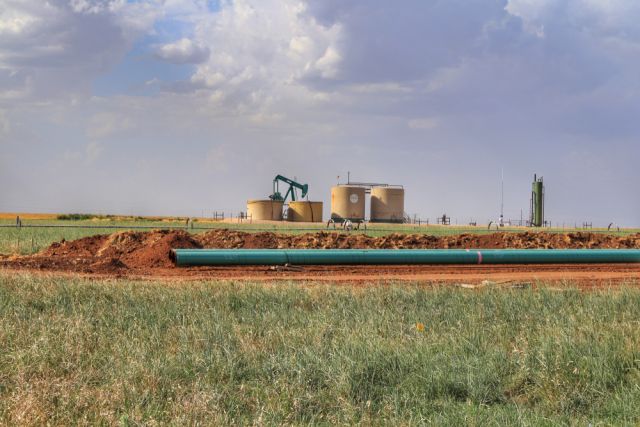
Permian gas producers exporting piped gas to Mexico can rest assured that demand south of the border will remain robust even under a new Mexican president, Wood Mackenzie says. (Source: Shutterstock)
Permian producers exporting piped gas to Mexico can rest assured that demand for U.S. gas south of the border will not change much under the next Mexican president.
Mexico’s presidential elections are June 2. The next president will be elected to serve a six-year term.
“Mexico’s oil and gas demand is forecast to grow at 2% during the current decade,” Adrian Lara, Wood Mackenzie principal analyst, upstream Latin America, wrote May 23 in a research report.
“However, hydrocarbon production is set to continue to decline throughout the decade, making it difficult for the nation to meet its increasing domestic refining demands and natural gas demands in the power and industrial sectors,” Lara said. “In this environment, Mexico will be unable to reduce gas imports.”
Lara said state-owned Petroleos Mexicanos (Pemex), the world’s most indebted energy company, is restrained in its ability to assume risks and fund needed investments to expand Mexico’s energy infrastructure and production.
“Mexico is facing several energy challenges, including declining oil and gas production, a need to increase exploration activity, a high dependence on gasoline imports, a constrained power supply and public pressure to transition to renewable energy,” Lara said.
Mexico currently imports around 6.8 Bcf/d from the U.S., according to the U.S. Energy Information Administration. Importantly, an additional 7.8 Bcf/d could be needed to fund numerous LNG export facilities planned for Mexico’s Pacific coast.
RELATED
Permian Gas Finds Another Way to Asia
Increased private sector involvement needed
The private sector has mostly been sidelined under Mexican President Andrés Manuel López Obrador (AMLO) amid his nationalistic tone. And presidential frontrunner Claudia Sheinbaum, of the same Morena Party as AMLO, isn’t expected to drastically change course. In fact, many analysts expect her to offer policy continuity.
For onlookers, Australia’s Woodside Energy might be a case in point about a private investor or international oil company betting on Mexico’s hydrocarbon potential, especially offshore. Woodside has already taken a $7.2 billion final investment decision on its Trion development, offshore Mexico, with partner Pemex.
Woodside expects production from Trion will be processed through a floating production unit (FPU) with a nameplate capacity of 100,000 bbl/d, its CEO and Managing Director Meg O’Neill recently told Hart Energy in an exclusive interview.
The FPU can process up to 120,000 bbl/d when Woodside is producing early in the field’s life with no water breakthrough. First oil is slated for 2028, according to O’Neill.
“Regardless of the presidential election outcome, there is a need for the new government to re-assess not only the role but also the terms for increasing private investment in the energy sector,” Lara said.
Recommended Reading
US Oil, Gas Rig Count Unchanged This Week
2025-03-14 - The oil and gas rig count was steady at 592 in the week to March 14. Baker Hughes said that puts the total rig count down 37, or about 6% below this time last year.
E&P Highlights: April 14, 2025
2025-04-14 - Here’s a roundup of the latest E&P headlines, from CNOOC’s latest production startup to an exploration well in Australia.
Diversified, Partners to Supply Electricity to Data Centers
2025-03-10 - Diversified Energy Co., FuelCell Energy Inc. and TESIAC will create an acquisition and development company focused on delivering reliable, cost efficient net-zero power from natural gas and captured coal mine methane.
US Oil Rig Count Rises to Highest Since June
2025-04-04 - Baker Hughes said oil rigs rose by five to 489 this week, their highest since June, while gas rigs fell by seven, the most in a week since May 2023, to 96, their lowest since September.
Huddleston: Haynesville E&P Aethon Ready for LNG, AI and Even an IPO
2025-01-22 - Gordon Huddleston, president and partner of Aethon Energy, talks about well costs in the western Haynesville, prepping for LNG and AI power demand and the company’s readiness for an IPO— if the conditions are right.
Comments
Add new comment
This conversation is moderated according to Hart Energy community rules. Please read the rules before joining the discussion. If you’re experiencing any technical problems, please contact our customer care team.




